223 Search Results for video modeling
October 14, 2014
by Carole Zangari -
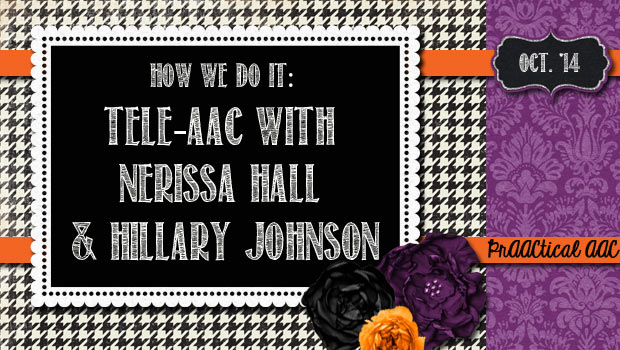
Have you been hearing a lot about telepractice lately and are wondering how that works when the client has AAC needs? In this post, we turn to Nerissa Hall and Hillary Jellison of Communicare who tell us how they use it in their clinical practice. Nerissa and Hillary are both SLPs and assistive technology practitioners specializing in AAC, AT, and telepractice/tele-AAC. They have worked together for a number of years and are the proud owners of Commūnicāre, LLC, organization based in Western Mass and CT, that offers intervention, consultation, and evaluation services focusing on supporting an individuals, or a team’s, success and independence through implementation of AAC, AT and innovative and evidence-based practices. We are committed to our clinical work, as well as translational research and are members of the C.A.R.E. Consortium. Tele-AAC: A Powerful Way of Supporting Individuals Using AAC Telepractice, which is used to provide professional services by linking clinicians... [Read More...]
July 31, 2014
by Carole Zangari -
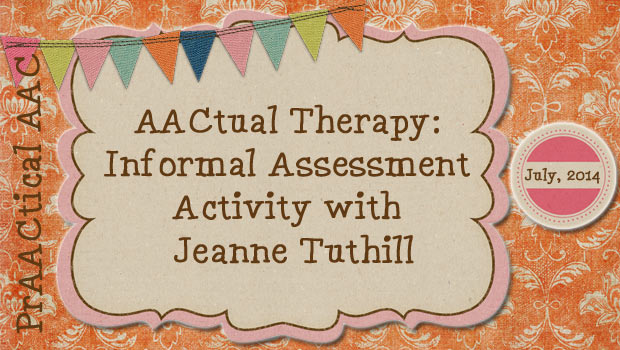
We are so pleased to have a return visit by SLP Jeanne Tuthill. In this post, she shares an informal assessment activity based around a Book of Favorites. Enjoy! ::::::::::::::::::::::::::::::::::::::::::::::::::::::::::::::::::::::::: Greetings from Massachusetts! My work at the Collaborative for Educational Services is on a school-year contract so I’m currently on summer break with my three girls. We’ve been plenty busy with fun summer activities but my learning and growing as an AAC therapist isn’t tied to my contract dates. I’ve also been busy watching webinars, reading some great books (educational as well as pleasure-reading), and following the Facebook feeds of some of my favorite AAC peeps! I really wish I could have attended ISAAC in Lisbon, Portugal this year…I loved seeing everyone’s photos and posts from what looked to be a spectacular conference! In my last post on assessment I shared with you an ice-breaker activity that is low-stress for... [Read More...]
May 30, 2014
by Robin Parker -
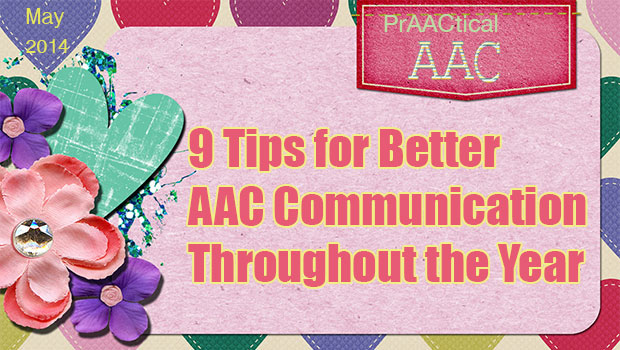
Although Better Hearing and Speech Month is ending, we want to continue best prAACtices in all teaching interactions throughout the year. Here are 9 AAC facilitator tips to help with this goal. Provide Aided Language Input (ALI)– ALI is modeling AAC style. Speak AAC to the AAC user. Use Scaffolding– Scaffolding is a verbal and visual strategy that has the facilitator build upon prior knowledge of the learner in order for the learner to integrate a new concept or skill. Model words and concepts to add information onto what the AAC user already knows and uses. Provide Expansions and Extensions– A form of modeling. Add a word to the spontaneous communication from the learner. The facilitator models a conceptual or grammatical word in the form of a model. Use Recasting– Recasts serve to add or correct information without obstructing the natural flow of communication. Recasting is another form of modelling. The... [Read More...]
March 10, 2014
by Robin Parker -
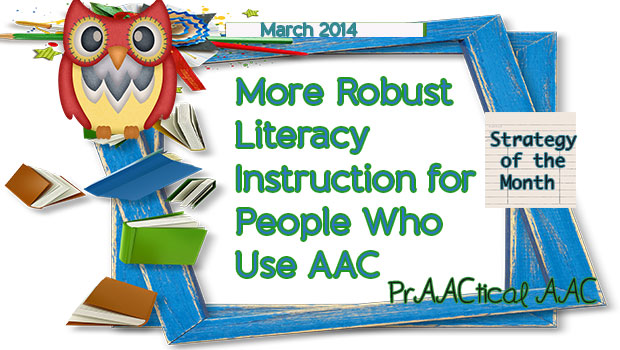
We love learning about AAC and literacy from resources that have a ‘presume competence’ philosophy, that provide research support, and that include specific teaching guidelines. With these ideas in mind, we love the Literacy Curriculum found on the Literacy Instruction Website by Janice Light and David McNaughton at Penn State. There are specific guidelines for providing literacy instruction to individuals with severe communication impairments. There is a specific curriculum to tell you what skills to teach, reasons for teaching those skills, how to teach the skills, and videotaped examples of teaching the curriculum. There is listed research support that you can use to understand the rationales for the skills you are teaching as well as provide evidence-based information about why you are choosing the approach. This post is intended to provide an introduction to the Literacy Curriculum. For comprehensive information go to the Literacy Instruction Website by Janice Light and David McNaughton.... [Read More...]
February 5, 2014
by Carole Zangari -
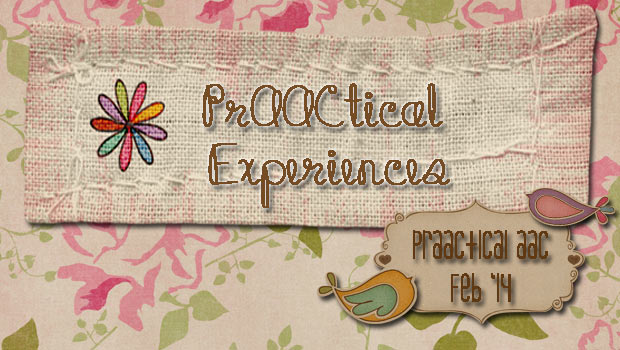
What do you wish you had known when you started providing AAC services? Awhile back, we posed this question on our Facebook page: “What are two things you wish you had known when you started providing AAC services?” The prAACtical responses got us thinking. Take a look. “The families need just as much training as the kids do.” Yup, and we’ll add something else to that. WE need training, too! We expect so much of ourselves, which is fine, but we also need administrators, agencies, and colleagues to realize that it takes a lot to keep up with changes in the science and technology. That doesn’t come cheap or easy. “Don’t be afraid to ask others in the field. They are so helpful for problem solving.” We couldn’t agree more. Most AAC professionals we’ve met have been incredibly supportive. Reach out to others in your area, through social media, and at... [Read More...]
January 27, 2014
by Robin Parker -
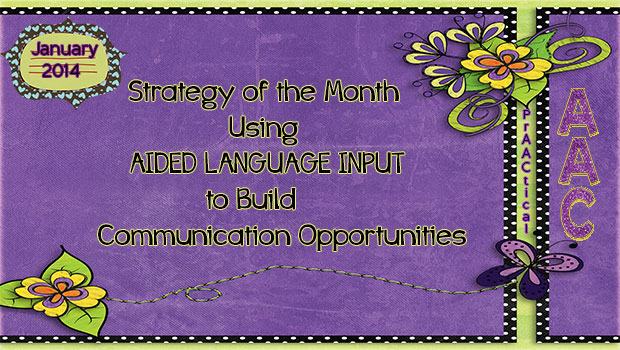
We can not write, speak or do enough Aided Language Input (ALI). If we expect learners to speak AAC, we must speak AAC to them. It is difficult enough to learn a language and imagine if no one spoke it to you in the language you were expected to speak…But there are so many more reasons to do ALI. Aided Language Input (ALI) belongs in the context of communication opportunities. It is modeling AAC style. Once we model a target language concept AAC style, then add the wait and signal strategy, the learner then knows it is their communicative turn. Especially if you wait with the raised eye brow signal. They often will take their turn expressively. But, if they do not take the communicative opportunity to take their turn, there are gestural, visual, verbal, and physical prompts that can be implemented. In other words, they can make use of... [Read More...]
October 31, 2013
by Robin Parker -
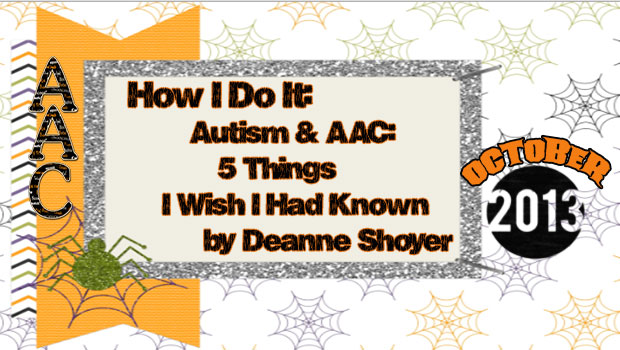
We are so pleased to have connected with Deanne Shoyer from Small But Kinda Mighty and even happier that she is our guest blogger today. Deanne is a mom of twin boys who both are on the autism spectrum. Deanne successfully fundraised to buy iPads for her boys and has been active for more than 3 years in social media and in the special needs app community. She has written about many things but often focuses on implementing AAC in a very PrAACtical way. Please feel free to share this very important post as she highlights AAC, what she has learned, and how it may help others. by Deanne Shoyer at Small But Kinda Mighty (original post at Small But Kinda Mighty) In the title of this post I’ve linked autism and AAC for a specific reason. A lot of the points here are equally applicable to people who have a... [Read More...]
August 29, 2013
by Carole Zangari -
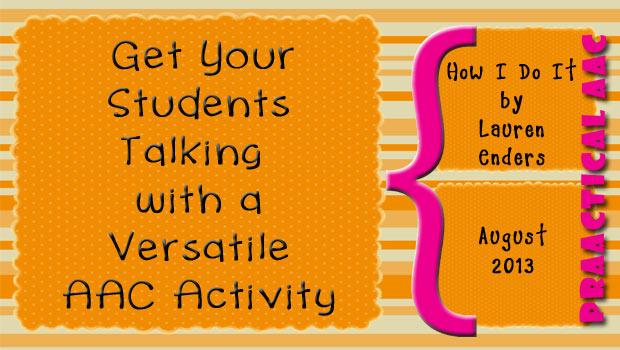
We are so excited to start off the new school year with a wonderfully prAACtical post by Lauren Enders. Lauren’s “How I Do It” posts have been very popular and this one is no different. Today, she shares ways to incorporate key AAC principles in engaging intervention activities and models that with high school students. :::::::::::::::::::::::::::::::::::::::::::::::::::::::::::::::::::::::::::::::::::::::::::::::::::::::::::::::::::::::::::::::::: LEARNING TARGETS (Samples: can be changed to meet student goals) Using core vocabulary, the student will: control the actions of others (beginning with core words like “more”, “stop”, “go”, “again”, and “different”) express his or her opinions through commenting (beginning with core words such as “like”, “don’t like”, “good”, “bad”, and “silly”) TARGET POPULATION: all ages (I have used variations of this activity successfully with students from age 3 through age 21.) TYPE OF AAC: ALL types!! What’s crucial here is the availability of core vocabulary, not the system used. Systems used can vary from... [Read More...]
August 24, 2013
by Robin Parker -
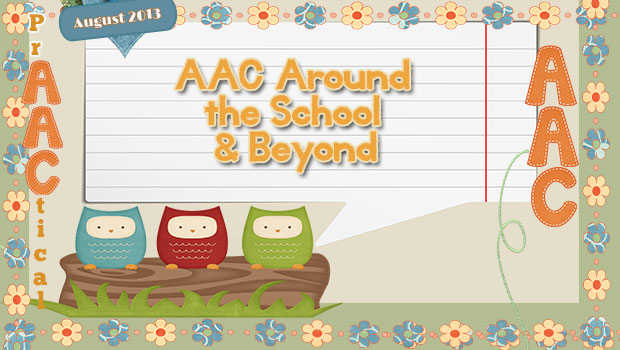
For the August Strategy of the Month, we have been thinking, writing, & talking about AAC in School. School is where AAC learners spend a large portion of their days. There needs to be multiple opportunities for students to USE and LEARN AAC each day. More than that though, we strive for full participation and interaction for students who use AAC. Students should not have to prove that they can do these things before they have ACCESS to AAC strategies and intervention. Here are some things that can be done to help build AAC participation for both students and educators. Provide ACCESS to AAC devices and visual supports throughout ALL activities in ALL places in school and on school sponsored trips/community based instruction. Provide Aided Language Input when teaching AAC to students. Use a Core Word approach when teaching AAC to students but don’t forget about Fringe Vocabulary. Learn and use partner assisted communication... [Read More...]
August 20, 2013
by Robin Parker -
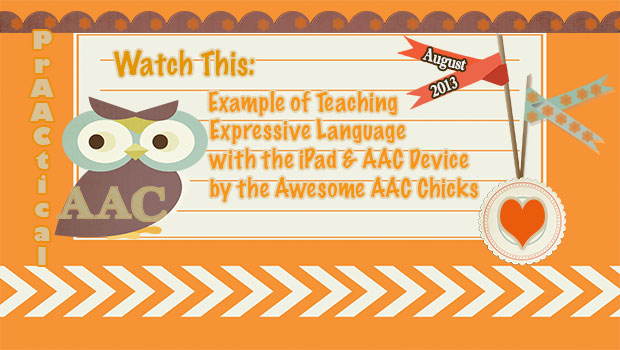
Here is authentic AAC teaching by the AAC Chicks. Watch for the combined use of AAC language facilitation strategies. Can you see: aided language input, wait & signal/time delay prompt, specific reinforcement, expansions, scaffolding, modeling, and more. Also, for the SLP’s, notice the data collection that does not distract from the session.









